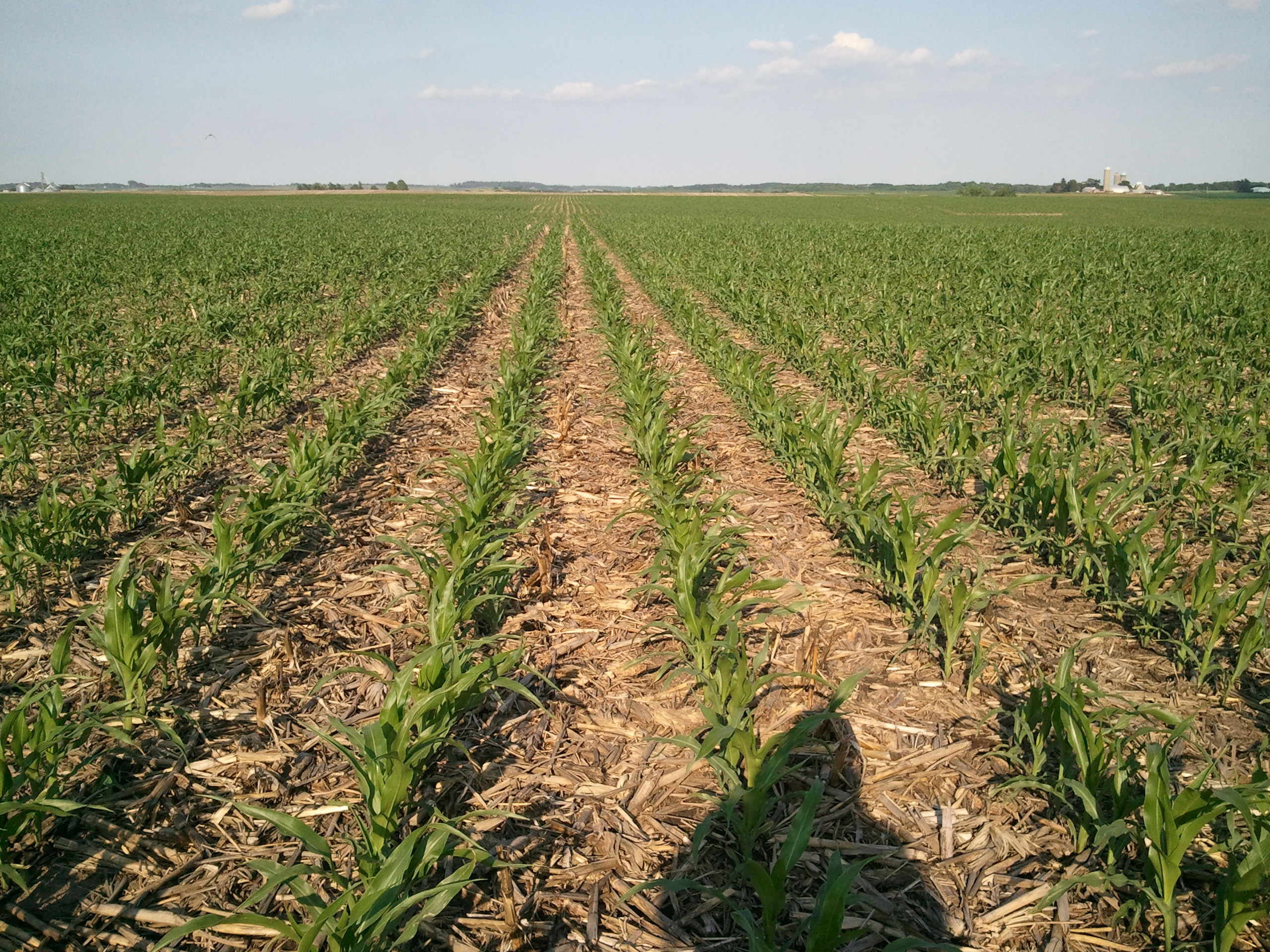 Once a dealership owner himself and now a full-time farmer, Bob Bottens has gotten to view precision technology from both sides of the tractor door.
Once a dealership owner himself and now a full-time farmer, Bob Bottens has gotten to view precision technology from both sides of the tractor door.
“Being in the equipment business, we were exposed to all the latest technologies and often ended up with them installed in our own farm equipment,” Bottens says. “We’ve had variable-rate technology for fertility and planting populations and yield mapping for 16 years.”
Precision technology is something Bottens thrives at and he’s added quite a lot of technology to his operation over the years. He and his son, Monte, use FmX Trimble monitors with Trimble RTK Autopilot; the Trimble Field IQ fertilizer-rate controller and Trimble Tru-Count clutches; a Case IH monitor for population control and planter folding; a 20/20 SeedSense monitor for downforce and singulation monitoring; and a monitor for cameras that allows Bottens to observe his Redball fertilizer system float tubes and to watch the row units that are hardest to see from the tractor.
“You only get one chance to get the crop in right. Autopilot allows me to watch all the monitors and make adjustments as needed,” Bottens says.
Precision steering with auto shutoffs allows Bottens to plant efficiently as his equipment gets larger and larger. Precision monitoring and planting takes his efficiency to the next level. Bottens has had a 20/20 SeedSense monitor for 5 years.
“It allows you to plant as poorly or as well as you want. If you don’t want — or don’t have the time — to fix a problem you can leave it alone, but you can go back and say I should have done things differently,” Bottens says. “But if you can eliminate problems with downforce, population, skips and doubles you can maximize your success.”
He says this year his corn-on-corn no-till fields are the best he’s ever seen. He partially attributes that success to his new Case IH Early Riser planter with Precision Planting 20/20 Airforce automatic downforce adjustment.

Precision technology ensures that variability is highly managed for Bob Bottens. Rows are straight, seeds are placed at optimum depth and reduction of skips and doubles through precision monitoring results in picket-fence stands despite tough corn-on-corn no-till conditions.
Points Of Pain: Treating All Customers Equally
Dealers need to recognize that not every producer needs in-person service for their precision service issues, Bottens says.
“Questions should be answerable by phone for most producers, which would allow dealers to cover ten times the ground that they do when trying to physically go from farm to farm providing technical support,” he says.
He says the responsibility should be in the hands of the dealer and the producer. He personally installs all of his own precision equipment.
“I just want the product, the instruction book and for my dealer to be available on the phone when I need them. That way, if I encounter a problem I’m more likely to know how to fix it,” he says.
While that option isn’t for everyone, he suggests that dealers should offer to assist producers with installation — instead of just doing it for them — and provide annual training on the devices.
The Bottens use many forms of precision technology at planting to get picket-fence stands even in tough no-till corn-on-corn conditions. They rely on autopilot, row clutches, population and fertilizer control, automatic downforce and monitoring singulation and ride. (Click here to see the video in a full sized window.)
“Those producers that do not attend the annual training should be charged a premium for on-farm technical support, while those that took advantage of training would be provided with free-of-charge support over the phone,” Bottens says. “If you’re not willing to train on the product then if you have a problem, you pay. About 90 percent of precision technology problems should be able to be solved over the phone.”
Another area where Bottens sees a need for improvement is clarity in instruction manuals and from the technicians providing customer support.
“I’m very experienced with precision technology and sometimes I can’t figure out a problem or what the instruction manual is trying to say after reading four or more times,” he says. “If the books were clearer about what each setting and function does and why, there wouldn’t be as great of need for technical support.”
He notes that he prefers his product manuals in digital form because of the frequency of changes.
“When I do speak with technicians I often find they specialize in only one area. My software guy has no idea about precision technology and how it works, only how the programming for the monitors works,” he says. “When I tried to ask him about the cable bringing in my GPS signal as part of the problem, he was no help. They’re so specialized that they can’t see the forest for the trees.”



![[Technology Corner] Discussing AI’s Potential Impact on Service & Support](https://www.precisionfarmingdealer.com/ext/resources/2025/04/11/Discussing-AIs-Potential-Impact-on-Service--Support.png?height=290&t=1744385717&width=400)


